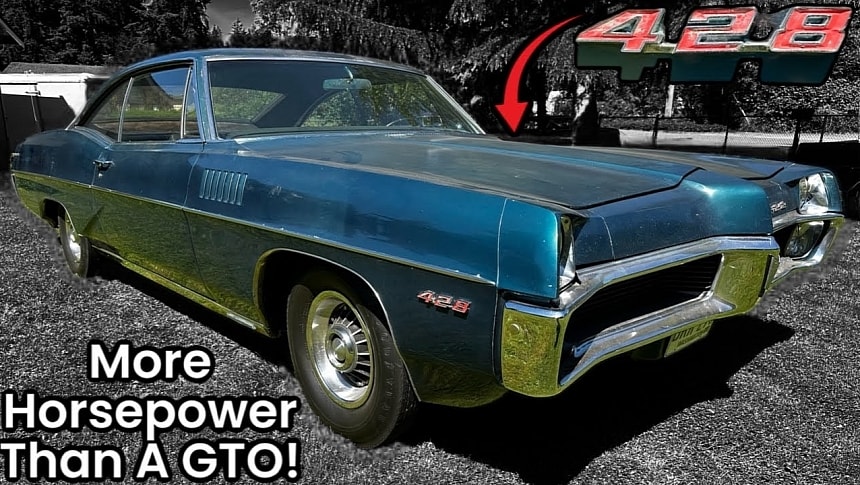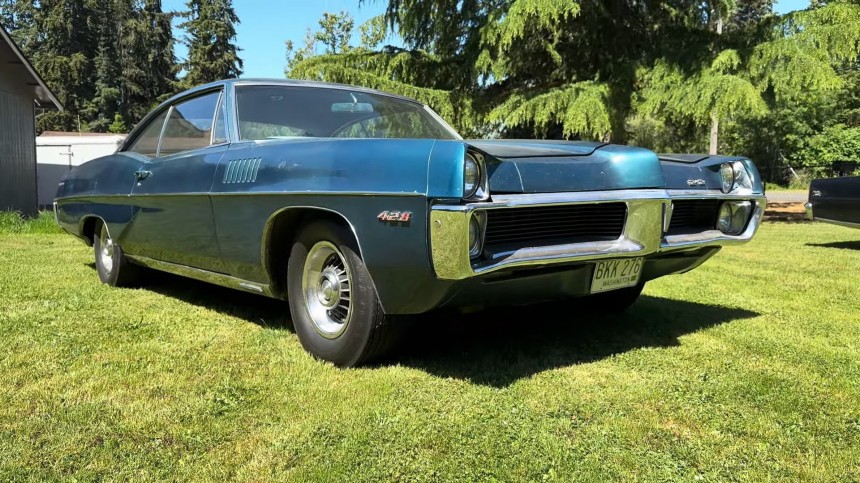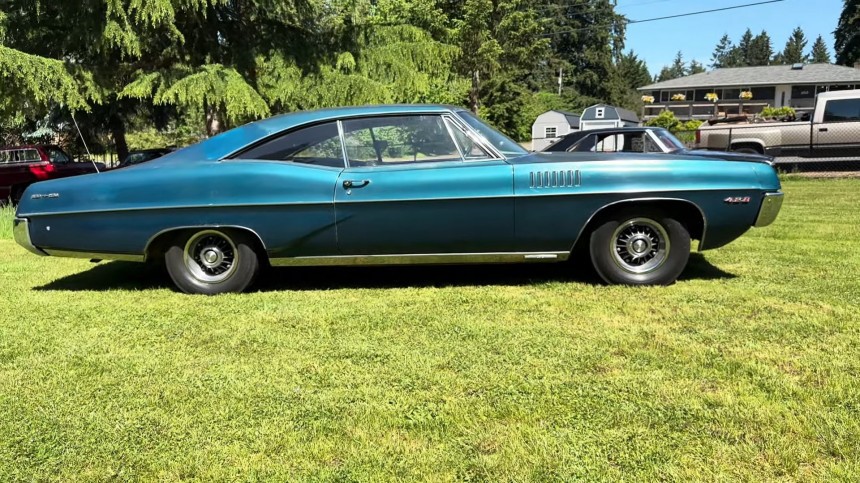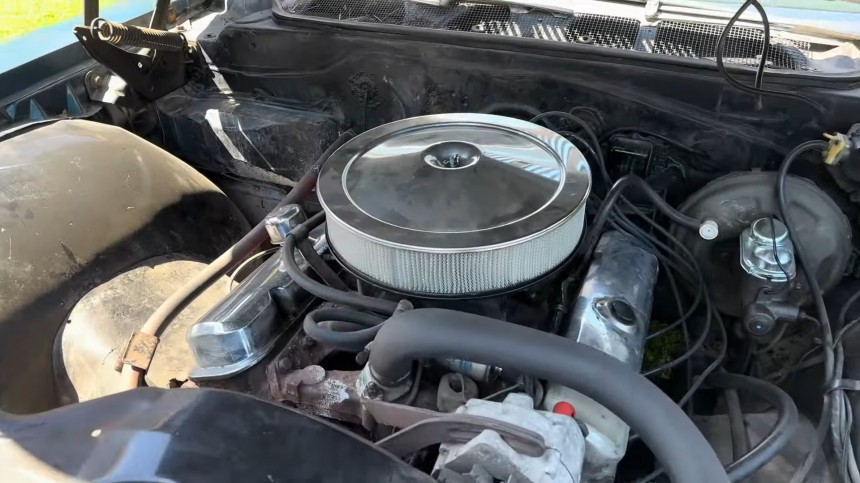Probably the greatest year in Pontiac history, 1964 is instantly associated with the formidable Le Mans optional performance package. The muscle car rebellion began as an experiment by a trio of massive piston heads (John DeLorean, Rus Gee, and Bill Collins) in which an intermediate body would be fitted with an engine from the full-size line of Pontiacs. The GTO was born, and the rest is history. Almost because that same year, another iconic Poncho came out.
The GTO was the talk of the industry in 1964, particularly since General Motors had pulled the plug on its performance departments and exited factory-backed motorsports. Not only that, but it even imposed a limit on engines in an attempt to smother high-adrenaline, high-octane gasoline activities in a GM product.
The rule was simple: all cars had to abide by a ‘ten-pound body mass per cubic inch of standard engine displacement’ rule. In practice, this meant that all intermediates could not be fitted with a V8 bigger than 400 cubes (6.6 liters). The three rascals mentioned earlier read the rule book inside out and saw that one thing was missing. There was no rule about an optional engine size. Thus, the 389-cube from Catalina and Bonneville was shoehorned in the Tempest under the GTO moniker.
The other big news that went almost undetected was an addition to the Catalina family: the 2+2 package, which brought a pair of bucket seats. At extra cost, the 2+2 could be optioned with goodies such as a 421-cube Tri-Power V8 instead of the standard 389 two-barrel. Four-speed manual transmission and eight-lug wheels were other add-ons for the Catalina 2+2.
One year later, in 1965, the car lost the Catalina part of the name in the badges and the small engine, leaving the 421 cubic-inch (6.9-liter) as standard equipment. The 1965 2+2 was the talk of the year after ‘Car and Driver’ pitted it against a Ferrari 330 GT 2+2.
A tidal wave of reactions emerged after the magazine concluded that the big Poncho was faster in the quarter-mile, faster from zero to sixty mph (97 kph), and breathed down the Prancing Horse’s mane all the way on the road-course test, finishing in under half a second behind the pompous V12 Italian Gran Turismo.
The controversy certainly attracted attention, and sales for the Catalina 2+2 peaked at 11,521 examples. Pontiac took the nameplate one step above and made it a separate model in 1966. Still, it did not perform according to the bean counters’ expectations.
Production headcount records the 2+2 at 6,383 units, a dramatic drop from the all-time high. The performant full-size Pontiac was doomed, but the division managed to keep it on the brochures for one more year. To make it irresistible, the car received something no other Pontiac could brag with, short of the Grand Prix – a 428 cubic-inch motor that delivered 360 horses and 472 lb-ft (365 PS, 640 Nm) as standard. Power-wise, the GTO tied the output from a 400-cube V8, but the torque on the muscle car was slightly lower (438 lb-ft / 594 Nm).
To outgun the mid-size superstar, the 2+2 proposed an optional version of the 428-cube lump that delivered ten fewer pound-feet of torque (452 lb-ft / 613 Nm) but sixteen extra horses for a grand total of 376 hp (381 PS). The additional power was enough for a full-size land-yacht Pontiac to keep it cheek-to-jowl with the GTO in the performance ratings.
It wasn’t the only change made to the final version of the nameplate. The design was refreshed completely, from the coupe's sweeping roofline to the retracting, concealed wipers and iconic front-end looks. The staple stacked headlights were retained from the previous model year, but they now came in two distinct sections, separated horizontally by a slim, split bumper assembly housing the grille and lower headlamps. The upper headlights were housed in a color-keyed metal panel above the bumper.
However, looks and muscle didn’t lure buyers, as only 1,768 were ordered with the High-Output (HO) 376-hp V8 referred to as the “Quadra-Power” 428 in the performance sales literature. ‘The 376-hp Quadra-Power 428 is extra cost. Quadrajet 4-bbl. New heads. New combustion chamber design. Bigger intake and exhaust valves. New valve location. Enlarged ports. New intake manifold with smoother, more efficient runners. New free-flow header-type exhaust manifolds.’
The solitary four-barrel carburetor was the best money could buy in a Pontiac of any kind in 1967 – or in any other General Motors product, bar the Corvette. The sportscar was fighting its own battle with the introduction of the 427 big-block that year, replacing the famous 396/425-hp V8 from 1966. The HO motor featured a chrome, low-restriction air cleaner atop its intake manifold and a heavy-duty forged steel crank with four-bolt main caps.
‘High Performance Cars’ magazine tested a 1967 428 HO, 4-speed 2+2 coupe, along with a GTO (Pontiac, not Ferrari) and the then-new Firebird pony car. Pontiac turned over to one of its most performance-oriented dealerships in the nation, Royal Pontiac, from Royal Oak, Michigan. The race-bred mechanics tweaked each of the three cars to obtain every ounce and drop of performance.
Shod with a set of 8.50 x 14 M&H cheat-code slicks and a 4:11 Safe-T-Track rear end, the big Pontiac stormed through the quarter-mile in a jaw-dropping 13.37 seconds at 106.01 mph (170.60 kph). For a car weighing 4,080 pounds (1,850 kg) as tested, it was a noteworthy performance. Out of the 1,768 2+2 produced in its final year, just 261 came with the 376-hp High-Output engine, and only 144 of those had the no-fun-spared four-speed, three-pedal manual box.
Mercilessly attacked on two fronts by its little brothers, the GTO and the Firebird, the 2+2 stood little chance and disappeared after 1967. To say they’re rare would be the understatement of the year, but here’s one in the video below, sporting all the goodies from the long-gone age of performance full-size motoring.
The rule was simple: all cars had to abide by a ‘ten-pound body mass per cubic inch of standard engine displacement’ rule. In practice, this meant that all intermediates could not be fitted with a V8 bigger than 400 cubes (6.6 liters). The three rascals mentioned earlier read the rule book inside out and saw that one thing was missing. There was no rule about an optional engine size. Thus, the 389-cube from Catalina and Bonneville was shoehorned in the Tempest under the GTO moniker.
The other big news that went almost undetected was an addition to the Catalina family: the 2+2 package, which brought a pair of bucket seats. At extra cost, the 2+2 could be optioned with goodies such as a 421-cube Tri-Power V8 instead of the standard 389 two-barrel. Four-speed manual transmission and eight-lug wheels were other add-ons for the Catalina 2+2.
A tidal wave of reactions emerged after the magazine concluded that the big Poncho was faster in the quarter-mile, faster from zero to sixty mph (97 kph), and breathed down the Prancing Horse’s mane all the way on the road-course test, finishing in under half a second behind the pompous V12 Italian Gran Turismo.
The controversy certainly attracted attention, and sales for the Catalina 2+2 peaked at 11,521 examples. Pontiac took the nameplate one step above and made it a separate model in 1966. Still, it did not perform according to the bean counters’ expectations.
Production headcount records the 2+2 at 6,383 units, a dramatic drop from the all-time high. The performant full-size Pontiac was doomed, but the division managed to keep it on the brochures for one more year. To make it irresistible, the car received something no other Pontiac could brag with, short of the Grand Prix – a 428 cubic-inch motor that delivered 360 horses and 472 lb-ft (365 PS, 640 Nm) as standard. Power-wise, the GTO tied the output from a 400-cube V8, but the torque on the muscle car was slightly lower (438 lb-ft / 594 Nm).
It wasn’t the only change made to the final version of the nameplate. The design was refreshed completely, from the coupe's sweeping roofline to the retracting, concealed wipers and iconic front-end looks. The staple stacked headlights were retained from the previous model year, but they now came in two distinct sections, separated horizontally by a slim, split bumper assembly housing the grille and lower headlamps. The upper headlights were housed in a color-keyed metal panel above the bumper.
However, looks and muscle didn’t lure buyers, as only 1,768 were ordered with the High-Output (HO) 376-hp V8 referred to as the “Quadra-Power” 428 in the performance sales literature. ‘The 376-hp Quadra-Power 428 is extra cost. Quadrajet 4-bbl. New heads. New combustion chamber design. Bigger intake and exhaust valves. New valve location. Enlarged ports. New intake manifold with smoother, more efficient runners. New free-flow header-type exhaust manifolds.’
‘High Performance Cars’ magazine tested a 1967 428 HO, 4-speed 2+2 coupe, along with a GTO (Pontiac, not Ferrari) and the then-new Firebird pony car. Pontiac turned over to one of its most performance-oriented dealerships in the nation, Royal Pontiac, from Royal Oak, Michigan. The race-bred mechanics tweaked each of the three cars to obtain every ounce and drop of performance.
Shod with a set of 8.50 x 14 M&H cheat-code slicks and a 4:11 Safe-T-Track rear end, the big Pontiac stormed through the quarter-mile in a jaw-dropping 13.37 seconds at 106.01 mph (170.60 kph). For a car weighing 4,080 pounds (1,850 kg) as tested, it was a noteworthy performance. Out of the 1,768 2+2 produced in its final year, just 261 came with the 376-hp High-Output engine, and only 144 of those had the no-fun-spared four-speed, three-pedal manual box.
Mercilessly attacked on two fronts by its little brothers, the GTO and the Firebird, the 2+2 stood little chance and disappeared after 1967. To say they’re rare would be the understatement of the year, but here’s one in the video below, sporting all the goodies from the long-gone age of performance full-size motoring.













































